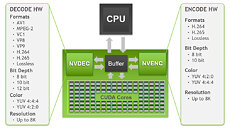
Sapphire Radeon RX 6950X TOXIC Reportedly Boosts to 2565 MHz at 346W TGP
As AMD is preparing to launch a highly-anticipated refresh of the Radeon RX 6000 series, codenamed RX 6x50 XT series. Alongside AMD, add-in board partners (AIBs) will have their say as well, and today we get to take a look at the alleged specifications of Sapphire's highest-end upcoming products. According to Chiphell member RaulMee, who claims to possess the specification of the newest Sapphire models, we are expected to see a bit higher total board power (TGP) with the arrival of this refresh. First and foremost, the Sapphire RX 6950XT TOXIC is the fastest air-cooled model from Sapphire, with a boost clock of up to 2565 MHz (255 MHz over AMD's reference 2310 MHz model), carrying a TGP of 364 Watts in OC BIOS. Regular TGP for this model is 332 Watts with a boost speed of up to 2532 MHz. Please note that this includes the power output of GPU and memory.
Next up, we have Sapphire's RX 6950XT NITRO+ SKUs. The non-SE card is a minor improvement over the AMD Radeon RX 6950XT reference GPU and offers a Silent BIOS option. The RX 6950XT NITRO+ Special Edition can go up to 325 Watts and 2435 MHz with OC BIOS applied. Silent BIOS is also an option, and it lowers the TGP to 303 Watts and 2368 MHz. The alleged specification chart also carries Sapphires' RX 6750XT & 6650XT NITRO+ GPUs, of which you can check the clock speeds and TGPs below.
Next up, we have Sapphire's RX 6950XT NITRO+ SKUs. The non-SE card is a minor improvement over the AMD Radeon RX 6950XT reference GPU and offers a Silent BIOS option. The RX 6950XT NITRO+ Special Edition can go up to 325 Watts and 2435 MHz with OC BIOS applied. Silent BIOS is also an option, and it lowers the TGP to 303 Watts and 2368 MHz. The alleged specification chart also carries Sapphires' RX 6750XT & 6650XT NITRO+ GPUs, of which you can check the clock speeds and TGPs below.























































